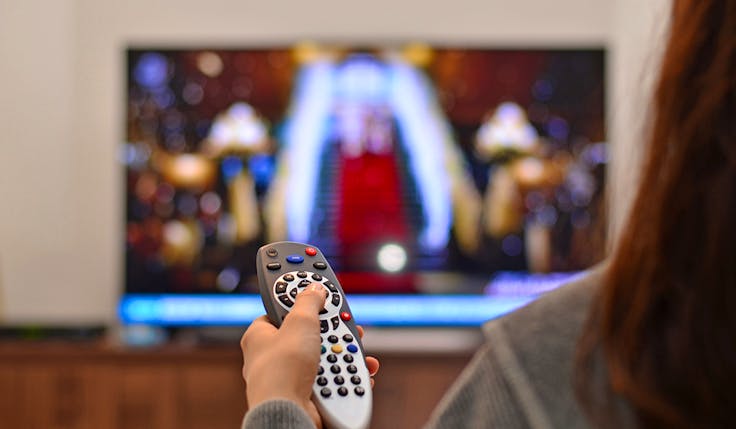Rising costs mean TV’s payback advantage is now in question
The price of TV ads has risen much quicker than the price of other channels over the past few years, while viewing has also declined, meaning it could be time for brands to change the channel.

A note from the author (updated 3 November 2023):
Data on media inflation used in this article and elsewhere is subject to some debate.
The data used here is from ECI, a global media auditor. Their figures are collected from a number of sources including experts, client data and agencies. They are used as a trusted source by industry bodies including WARC, and its data is in line with figures from the WFA which asks a panel of media agencies about the cost of what they actually bought.
Since the original publication of this article on 23 October a third source has emerged via friends at Thinkbox which shows a different pattern for TV, with inflation being lower.
This article has also been updated to incorporate ECI’s latest estimates of inflation as at Q3 2023. Previous data put the cost of a thousand watches of a TV ad up by 50% since 2019, while online video was up by 20%, display (18%), OOH (6%), radio (1%), print (-10%).
Rising costs mean TV’s payback advantage is now in question
They say change happens gradually and then all at once. For TV advertising, the “all at once” is now.
The “gradual” has been a topic of conversation for years, all about underlying trends, Netflix, the loss of those aged 16 to 34, and the waning ability of TV advertising to drive fame. The “sudden” is new. And it’s all about prices.
Over the last few years, the price of TV ads has risen much quicker than the price of other channels. The chart below shows the cost of a thousand watches of a TV ad is up by 41% since 2019, according to ECI data. While other channels have only seen modest increases and some haven’t increased in price at all.

The long-term, glacial change in the value of TV led to tweaks in media plans, but it never toppled TV from its place at the heart of the annual plan for many big brands.
But more expensive means a lower return on investment, and that means the optimal mix for many businesses has moved.
TV’s payback advantage over other channels has narrowed
The best allocation of budget across media channels depends on how much each one can deliver in sales and profits, compared to other options available. It’s simple. To maximise payback, you allocate more money to channels that pay back more per £1 spent.
This calculation has always benefitted TV. Whether looking at read-outs from their own econometrics, or referring to readily available benchmarks from meta-studies, bigger brands and the media agencies that advise them have seen TV convincingly outperform the others.
But the calculation has changed in recent years.
In the chart below, the grey bars show the old story. Pre-Covid, TV beat the average profit ROI by c.40%. But, in the pink line which incorporates media inflation since 2019, TV’s payback is now only c.10% above the average channel.
 Of course, measurable sales and profit aren’t the only reason companies air ads. In Marketing Week’s Language of Effectiveness survey, ‘communicating a desirable brand image’ to produce long-term sales was the second most important job for marketing.
Of course, measurable sales and profit aren’t the only reason companies air ads. In Marketing Week’s Language of Effectiveness survey, ‘communicating a desirable brand image’ to produce long-term sales was the second most important job for marketing.
For this task, many marketers believe TV has special powers. The argument goes that the medium is the message, and because TV advertising reaches everyone, it signals you’re big, powerful, and famous, and that lots of other people must buy from you.
The trouble is that broadcast TV doesn’t reach everyone anymore. More than 20% of us didn’t watch it at all in an average 2022 week. And the supply of “national TV moments” has fallen. The number of programmes pulling in more than 4 million viewers has halved since 2014, so there were only 48 of them in 2022. All this according to Ofcom.
TV is no longer a ‘preferred’ ad channel for marketers
Market forces vs. broadcasters’ decisions
All of this begs a question: How on earth can the price of TV advertising be going up even as it’s ever less able to deliver the key things advertisers want from it: reach, fame and water cooler moments?
One answer is just that everything’s expensive nowadays, although general inflation should affect all media channels the same way.
Another is supply and demand. There is increasingly little supply, and broadcasters are collecting a scarcity premium from advertisers that are still keen to buy.
A previous trickle of smart money flowing from TV to online video should rationally become a flood.
It’s hard to know from the outside, but if TV inflation is under the broadcasters’ control, what they are currently doing looks very short-sighted.
The same Marketing Week survey showed that advertisers’ senior leadership teams rate return on investment as the most important metric for campaign success. It means that as TV prices go up and the ROI gap widens, marketers could be asked by their bosses to switch away from TV and into other channels.
ROI top effectiveness metric demanded by C-suite
An opening for online video
And so on to one of the big questions for 2024 planning. If TV can no longer be relied upon to return as much profit as before, what can take its place as a brand-building media investment in the centre of big advertisers’ marketing plans?
The right answer will depend on each individual advertiser’s circumstances, their specific line-up of ROIs, and their opportunities to reach the target audience. Some advertisers will still find good value opportunities in TV, but others will need to change tack.
So far, connected TV hasn’t emerged as a realistic replacement. While it can do the long-term brand building job, it’s complicated, fragmented, and fraught with confusing acronyms. And it doesn’t solve the problem of prices. On a per-view basis, CTV is more expensive than linear.
Online video is much more viable as an alternative. Its long-lasting effect is only a little less than TV’s, coming in at an average 4.6 months of increased sales after airing versus 6.5 months for TV, according to data from Magic Numbers, D2D, Ekimetrics, Circana, OMG, and VCCP media via IPA ARC.
 And, crucially, eyes and ears on online video aren’t scarce. The proportion of UK adults watching ads on YouTube reached 90% in 2022, according to Ofcom, and 45% of all UK internet users visited TikTok.
And, crucially, eyes and ears on online video aren’t scarce. The proportion of UK adults watching ads on YouTube reached 90% in 2022, according to Ofcom, and 45% of all UK internet users visited TikTok.
Over the long term of recent history, big advertisers have been tinkering with online video, finding it can work well and increasing their spend.
It remains to be seen what CMOs, faced with the new payback picture, will do. But if relative prices stay as they currently are, a previous trickle of smart money flowing from TV to online video should rationally become a flood.
Grace Kite is the founder of Magic Numbers which provides practical training and people-friendly analytics for marketers.








Comments